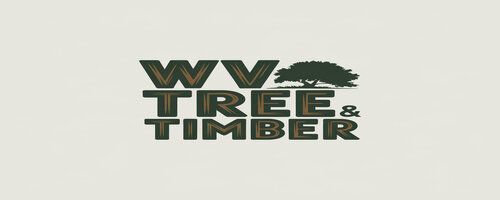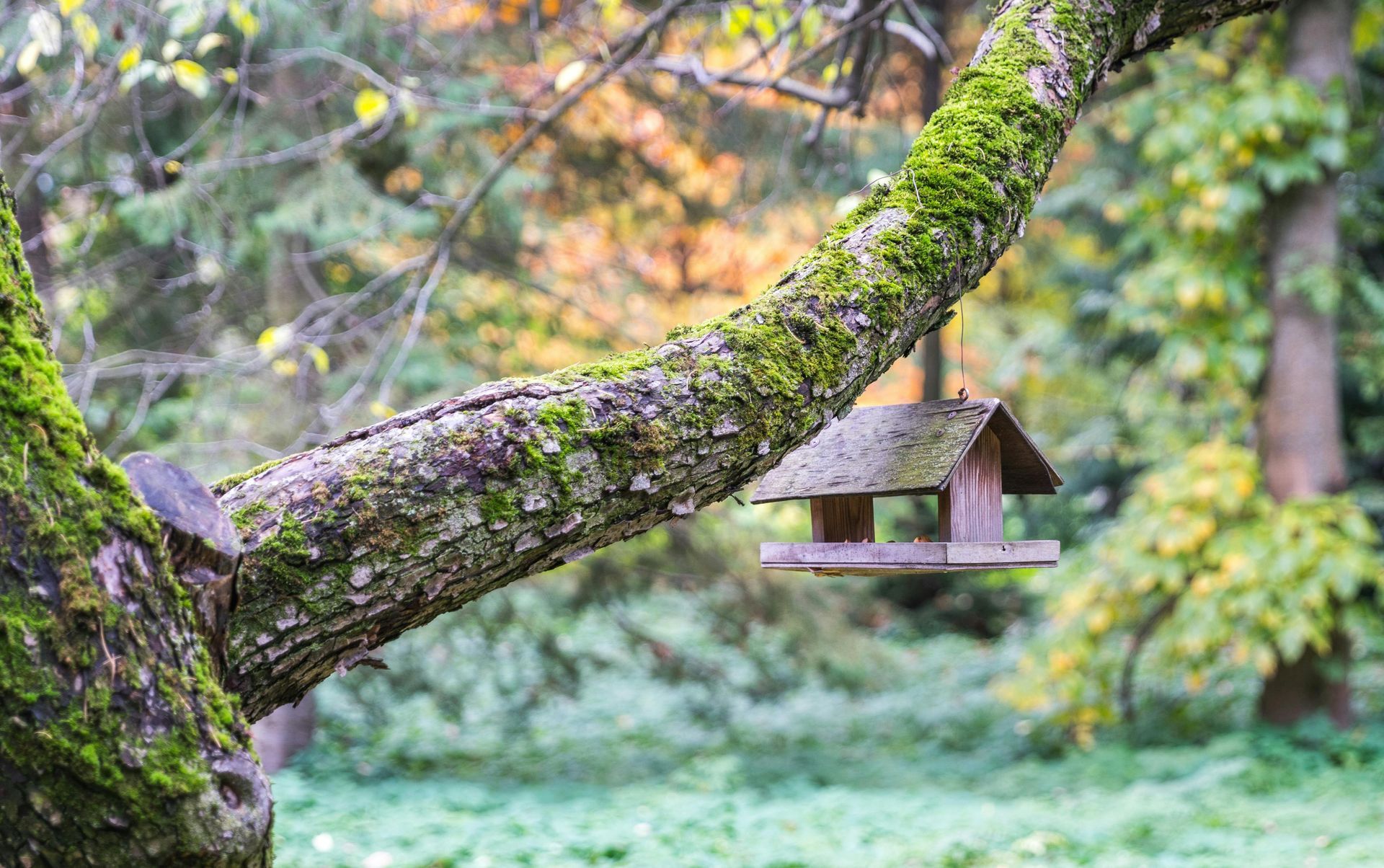What to Consider Before Taking Down a Tree on Your Property
That big, beautiful tree in your yard has been there for years. It’s provided shade on hot summer days, a home for birds, and maybe even a spot for a tire swing. But lately, you’ve been looking at it with a bit of worry. It’s leaning a little more than it used to, or some of its branches look worryingly dead. The thought has crossed your mind: Is it time to take down a tree?
For any homeowner, this is a major decision. It’s not just about changing your landscape; it’s about safety, cost, and a whole lot of work. Attempting to take down a tree yourself can seem like a way to save money, but it’s one of the most dangerous jobs you can do around your home.
This guide is here to walk you through everything you need to know. We'll cover the warning signs that a tree needs to be removed, the serious risks of a DIY approach, and the safe, efficient process that a professional tree service uses.
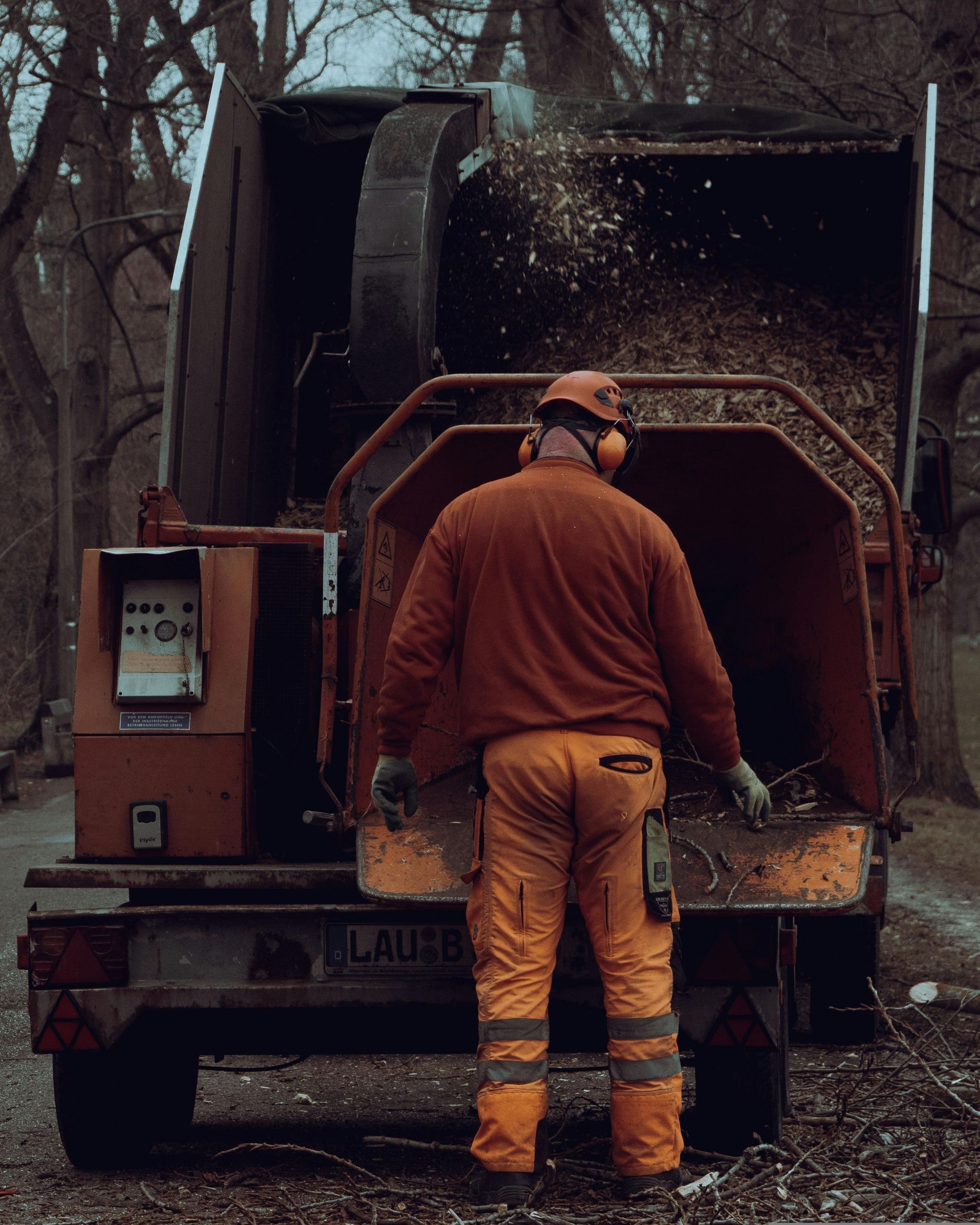
Red Flags: When Is It Necessary to Take Down a Tree?
Not every old or overgrown tree needs to come down. However, some trees pose a significant risk to your property and your family's safety. If you spot any of these red flags, it’s time to call in a professional for an assessment.
- A Significant Lean: All trees have a slight natural lean, but if you notice a sudden or severe lean (more than 15 degrees from vertical), it could be a sign of root failure or ground instability. A tree that’s leaning towards your house, driveway, or power lines requires immediate attention.
- Deep Cracks or Splits in the Trunk: A large crack in the trunk is a major structural weakness. It’s a clear sign that the tree is at high risk of splitting apart, especially during a storm.
- Hollow or Decaying Trunk: You can test for a hollow trunk by tapping on it with a rubber mallet. If it sounds hollow, significant internal decay is likely present. Other signs of decay include mushrooms or fungi growing at the base of the tree.
- Large, Dead Branches: Also known as "widow-makers," large dead branches can snap and fall without warning. If more than 50% of the tree's branches are dead or damaged, the entire tree may be a lost cause. Sometimes, a thorough tree trimming service can solve the problem, but other times it points to a larger health issue.
- Root Damage: Have you recently had construction or excavation work done near the tree? Severed or damaged roots can destabilize a tree, making it a serious hazard even if the trunk and branches look healthy.
- Proximity to Structures: Is the tree growing too close to your home's foundation? Are its branches tangled in power lines? Sometimes, a tree needs to be removed not because it's unhealthy, but because its location has become a liability. In these cases, especially after a storm, you may need an emergency tree service to prevent disaster.
The Dangers of DIY: Why This Isn't a Weekend Project
A quick search on YouTube might make taking down a tree look simple. But those videos don't show the near-misses or the tragic accidents. Tree felling is a precise science that involves physics, biology, and years of experience. For the average homeowner, it's a gamble with devastating consequences.
Statistic: According to the U.S. Consumer Product Safety Commission (CPSC), over 28,500 people are injured by chainsaws each year, with the average injury requiring 110 stitches.
The risks go far beyond a simple cut. Here’s what you’re up against:
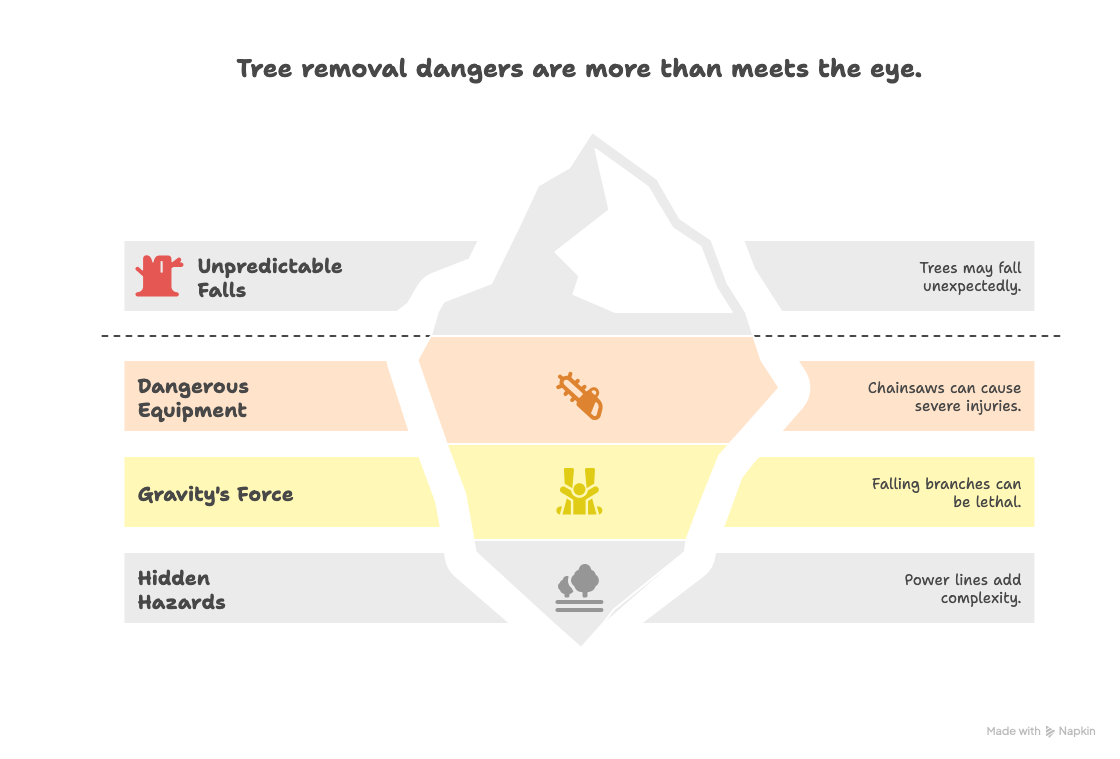
Hiring a professional tree removal service in Wheeling, WV isn't just about convenience; it's about mitigating these enormous risks.
The Professional Approach: The Safe Way to Take Down a Tree
When you hire a certified arborist, you're not just paying for muscle; you're paying for expertise, safety, and peace of mind. A professional company like WV Tree & Timber has the training, equipment, and insurance to handle the job correctly from start to finish.
"A leaning tree may seem like a simple problem, but it's a complex puzzle of physics and biology. Trying to solve it without expertise isn't just risky—it's a gamble with your home and your safety." - Experienced Arborist
Here’s what a professional tree removal process looks like:
- On-Site Assessment: An expert will visit your property to evaluate the tree's health, its location, and any potential hazards. They will then devise the safest and most efficient plan to take down a tree.
- Preparation and Safety: The team will secure the area, ensuring that people, pets, and property are a safe distance away. They use specialized safety gear, including helmets, ropes, and harnesses.
- Controlled Dismantling: For trees in tight spaces—like those near homes in areas like Woodsdale or St. Clairsville— the team rarely just yells "Timber!" Instead, they carefully climb the tree, removing it in controlled sections from the top down using specialized rigging to lower each piece safely to the ground.
- Debris Removal: Once the tree is down, the crew will chop it up, haul it away, and clean the site, leaving your yard tidy.
- Licensed and Insured: This is crucial. A reputable company carries liability and worker's compensation insurance. This protects you, the homeowner, from any financial responsibility in the unlikely event of an accident.
DIY vs. Professional Tree Removal: A Head-to-Head Comparison
Still on the fence? This table breaks down the key differences between a DIY attempt and hiring a professional service.
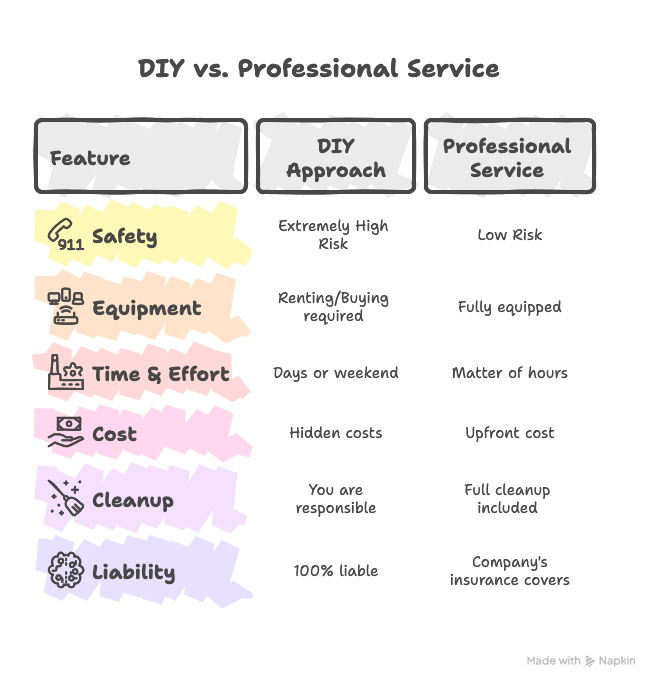
Beyond the Felling: What About the Stump?
Once you take down a tree, you’re left with an unsightly and inconvenient stump. Mowing around it is a pain, it can be a tripping hazard, and decaying stumps can attract pests like termites and ants.
This is where a
stump grinding service comes in. A professional crew uses a powerful machine to grind the stump down to several inches below the soil's surface. The resulting wood chips can be used as mulch or hauled away. This allows you to reclaim your yard, lay new sod, or plant a garden right where the tree used to be.
Frequently Asked Questions (FAQ)
1. How much does it cost to take down a tree?
The cost varies widely based on the tree's size, location, health, and accessibility. A small tree in an open yard will be much less expensive than a massive oak leaning over a house. The best way to know is to get a free, no-obligation quote.
2. Can I take down a small tree myself?
While it might seem manageable, even small trees can be dangerously unpredictable. If it's taller than you are or requires a chainsaw, it's always safest to call a professional. The risk is simply not worth the small amount you might save.
3. Do I need a permit to remove a tree on my property?
In most residential areas, like
Moundsville or
Bethlehem, you don't need a permit for a tree on your private property. However, some municipalities or HOAs have specific rules, especially for "heritage" trees or trees near public property, so it's always a good idea to check local regulations.
4. What's the difference between tree removal and stump grinding?
Tree removal deals with cutting down the tree to the stump. Stump grinding is a separate, specialized service to eliminate the stump left behind, grinding it into wood chips below ground level. Most professional companies offer both as part of their
complete tree services.
5. When is the best time of year to remove a tree?
A hazardous tree should be removed immediately, regardless of the season. For non-emergency removals, late fall or winter is often ideal. The dormant tree is lighter without its leaves, and the frozen ground helps protect your lawn from heavy equipment.
Your Trusted Partner in Tree Care
Making the decision to take down a tree is a significant one, but it doesn't have to be a stressful one. By understanding the warning signs and respecting the dangers involved, you can make the smart, safe choice for your home. The expertise, equipment, and insurance of a professional service provide peace of mind that a DIY project simply can't match.
Ready to safely and efficiently handle that problem tree? Don't risk your property or your well-being.
Contact the experts at WV Tree & Timber today
for a free, no-obligation consultation. Let our certified professionals take care of everything from removal to stump grinding. Call us or fill out our online form to get started!
